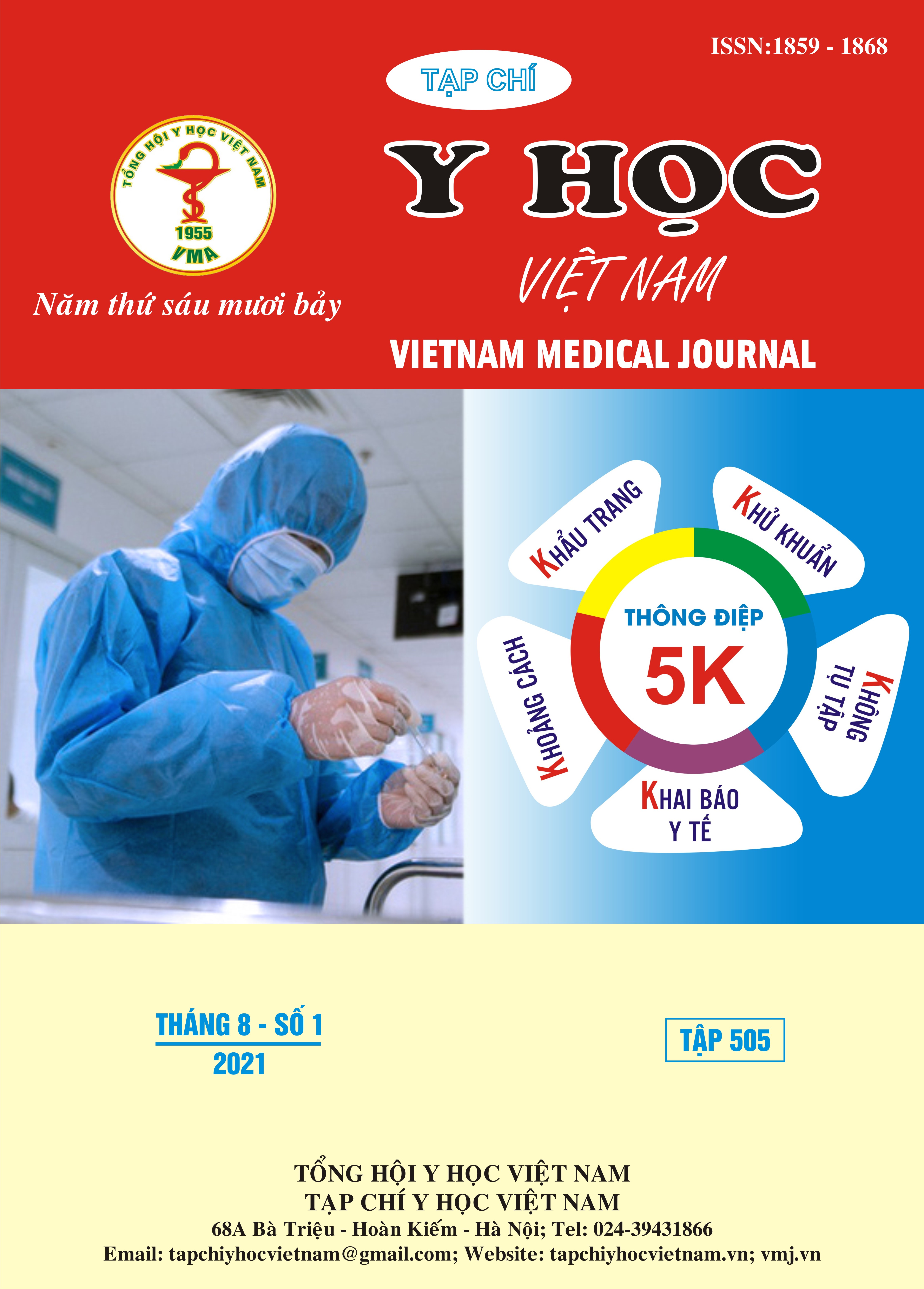EVALUATION OF THE RESULTS OF IN VITRO FERTILIZATION IN PATIENTS MATURED FOLLICLE BY USING GNRH AGONIST AT THE NATIONAL HOSPITAL OF OBSTRETICS AND GYNECOLOGY IN 2019
Main Article Content
Abstract
In recent years, GnRH agonist is know as the drug used to trigger follicular maturation instead of hCG in Antagonist regimen, combined with whole embryo freezing and frozen embryo transfer (FET) is a comprehensive solution to minimize ovarian hyperstimulation syndrome (OHSS) in in vitro fertilization. Objectives: 1) Describe some features of patients stimulate ovarian with GnRH antagonist regimen who were triggered for follicular maturation by GnRH agonist. 2) Evaluate the results of in vitro fertilization of these patients. Subjects and methods: The study was carried out by descriptive retrospective method, on 90 patients based on the combination of medical records and phone interviews. Results: For all patients did not need to hospitalize for ovarian hyperstimulation syndrome (OHSS), only ovarian hyperstimulation at mild level (13.33%) was recorded . The average number of oocytes obtained was 20.91 ± 7.13 oocytes, the number of matured oocytes accounted for 77.79%. Additionally, the average fertilization rate was 79.95 ± 20.01% and the average number of embryos was 13.27±6.21 embryos. The results of in vitro fertilization were well recorded, with the biochemical pregnancy rate reaching 55.20%, the clinical pregnancy rate reaching 44.03%, and the live birth rate reaching 34.33%. Conclusion: In vitro fertilization with an Antagonist regimen and oocyte maturation by GnRha gave good results in oocyte maturation rate, fertilization rate, clinical pregnancy rate, and live birth rate. The proportion of patients with ovarian hyperstimulation decreased significantly, especially there was no severe ovarian hyperstimulation. Keywords: GnRH agonist, ovarian hyperstimulation, in vitro fertilization.
Article Details
Keywords
GnRH agonist, ovarian hyperstimulation, in vitro fertilization
References
2. La Thị Phương Thảo (2016). So sánh hiệu quả phòng ngừa hội chứng quá kích buồng trứng và chất lượng noãn của phác đồ gây trưởng thành noãn bằng GnRH agonistvà hCG, Luận văn Thạc sĩ y học, Đại học Y Hà Nội.
3. Mathilde Bourdon, Maeliss Peigné, Celine Solignac et al (2020). The new standard for ovulation triggering should be gnrh agonist over hcg during controlled ovarian stimulation for ivf/icsi: a systematic review and meta-analysis. Abstract Only, 114(3),163-164.
4. Iliodromiti S, Lan V.N, Tuong H.M et al (2013). Impact of GnRH agonist triggering and intensive luteal steroid support on live-birth rates and ovarian hyperstimulation syndrome: a retrospective cohort study. J Ovarian Res, 6, 93.
5. Itai Bar Hava , Hadar Yafee, Yeela Omer et al (2020). GnRHa for trigger and luteal phase support in natural cycle frozen embryo transfer - A proof of concept study. Reprod Bio,20(3),282-287.
6. Thor Haahr, Matheus Roque, Sandro C. Esteves, Peter Humaidan (2017). GnRH Agonist Trigger and LH Activity Luteal Phase Support versus hCG Trigger and Conventional Luteal Phase Support in Fresh Embryo Transfer IVF/ICSI Cycles-A Systematic PRISMA Review and Meta-analysis. Frontiers in Endocrinology.
7. Vuong T.N (2016). Gonadotropin-releasing hormone agonist trigger in oocyte donors co-treated with a gonadotropin-releasing hormone antagonist: a dose-finding study. Fertil Steril, 105(2), 356-63.
8. Youssef M.A (2010). Gonadotropin-releasing hormone agonist versus HCG for oocyte triggering in antagonist assisted reproductive technology cycles. Cochrane Database Syst Rev, 2010(11), Cd008046.


